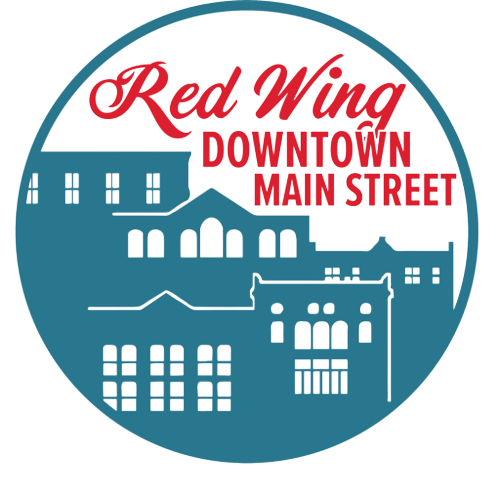I.O.O.F. Hall
Built: 1906
Architectural Style: Classical Revival
Architect/Builder: William Longcor
Currently: Carlson’s Sports Center
Over the years, Red Wing has been home for dozens of fraternal organizations. Organizations like The Fenian Brotherhood, The Knights of Labor, The Ancient Order of United Workmen, The Degree of Honor, Order of Moose, Royal Arcanum, and the Scandinavian Benevolent Society.
With distinct rituals and iconography these organizations are often shrouded in a layer of mystery, making non-members wonder if they are more of a secret society, subtly pulling the strings that shape the town’s economy and politics. In reality, Red Wing’s lodges and clubs were simply gatherings of community members bonding over shared careers or interests in the pursuit of fellowship.
The Masons were the the first such group in Red Wing, establishing in 1855, but one of the bigger early organizations was the Independent Order of Odd Fellows, or I.O.O.F. which established in Red Wing in 1868.
The I.O.O.F. was notable for being the first fraternal organization in the United States to allow women into its membership, with a separate organization known as The Daughters of Rebekah, or simply The Rebekahs. Hypocritically, the organization excluded any non-white applicants until 1971.
This building was constructed in 1906, and became the new home of the I.O.O.F. The Odd Fellows and The Rebekahs held their meetings and banquets on the second floor, while the First National Bank operated on the ground level.
As these groups established themselves in the city, one mysterious group did find its way into town: The Mystic Order of Seven, which formed sometime around 1881. The organization was built around the number seven, with meetings held on the seventh of each month for the maximum number of seven members and their seven guests. The meetings began at 7 PM and would last exactly seven hours, where they would eat seven course meals and individual members would tell no more than seven stories. There is not much record of the Order of Seven’s civic engagement, but they did form a toboggan club in 1885.
Many societies that still exist today like the Elks, Kiwanis, Rotary, Red Men, VFW, and Legion.
Over the years, these different groups have contributed more than just fellowship to the Red Wing community. The most notable historic example is the Kiwanis stairs on Barn Bluff/He Mni Can. The steps were originally placed in 1929 on the face of the bluff visible from the river and downtown. As part of the construction of the Eisenhower Bridge, they were removed, and eventually relocated to their current spot in 1979.
Additionally, Kiwanis introduced downtown’s iconic hanging flower baskets in the early 90s.
All told, these groups have made Red Wing a friendlier, beautiful place. Whether they’ve done this through the spirit of generosity or by secretly controlling everything, we may never know.

